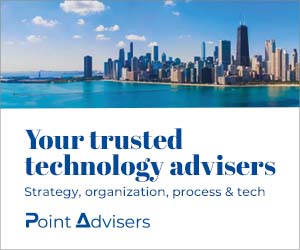Operational Technology (OT) Data

Data has been a cornerstone of business since the early days of computing in the 1960s. Along the way changes brought different tools to collect, store, process, and manage data. In the built environment OT (Operational Technology) is one of them.
Rapidly accelerating advances in how we are automating OT data and the recognized value of it is changing what it means to be “data-driven” in the built environment.
The use of OT data holds immense value in terms of optimizing operations, battling against rising energy costs, and contributing to a sustainable environment. As we ask our buildings to do more, data is playing an increasingly critical role.
Today’s buildings and facilities along with the systems, devices, sensors, and equipment that run them generate a huge amount of data that can be used to derive useful information that drives business outcomes and operational value. Most buildings we see were built at a time when technology was simple and unsophisticated – minimal connectivity, limited integration, and “data… what data?”
Fast forward to now and there are a multitude of connectivity options, building networks, smart devices and digital transformation which is delivering data to a new class of gathering and analytic platforms. This is enabling us to leverage information like we have not been able to do before and operate and manage our facilities at new levels.
Connecting to a Building’s OT Data
Collecting a building’s data, normalizing it, storing it, ensuring its integrity, analyzing it, and using it to make business decisions are all necessary. It is no longer about more data, but rather asking the right questions to get the right data. Understanding the data, solving specific challenges, and addressing specific issues all require identifying the right data. Data needs to be made available in the right format, democratized, and delivered to the right person at the right place and time all within a secure environment. This is the basic requirement to create a data value chain.
The ability to normalize different data types and blend diverse data sets requires planning, strategy, tools, standardization, and technologies. Without OT data management planning that includes a strategy and the right tools, users are only scratching the surface of the full value of their data.
Many conversations start by focusing on the technology and what type of technology do I use. When that happens, initiatives can falter by not delivering the correct insights needed to drive the intended results and outcomes. A robust, successful OT data and analytics approach encompasses more than a bundle of technologies. Having the right tools is critical. Too often executives overlook or underestimate the significance of the type of data and organizational components required to build a successful data and analytic function. In addition, preset business outcomes are not identified and set.
Identifying and Correctly Tagging Your Data
As one embarks on an OT data plan, it is important to look at all the operational data required to manage a building’s performance and day-to-day operations. Start by identifying what data is available and what data will be required. Categorize the data and information that different people and groups involved with the building’s operations need to have to perform their work. Much of the data will be from points on building systems, but other data may come from other systems. For example, asset data, energy bill data, service/repair data; all of which may come from systems outside of the facility or even outside the organization. Identify where the data exists, how it must be accessed, how it will be exchanged and estimate the volume. In all these cases, it is highly beneficial to decide on a “standardized dictionary” for your data. The standardized dictionary would include naming conventions, semantic modeling, and tags.
Standardize how things are identified and what they are called. Multiple naming conventions are the largest and most time-consuming issue involved with implementing an integrated OT data management platform. You do not want to end up with ten different names for air handlers or pumps!
The value of any smart building is stitched in data. When it comes to OT data, we need to move past “data drowning” and get to a point where we are automating the collecting, sorting, and exchanging of critical information that directly correlates to improving our building operations and delivering business outcomes.
In summary, the data produced from building systems, equipment and devices is more valuable than their cost. OT data and accompanying analytics hold immense value in terms of optimizing performance and efficiency, enhancing occupant experiences, and enabling for a healthy, safe, and sustainable built environment. Building and facility data is an irreplaceable asset.
This Week’s Sponsor
Founded in 2002, and embracing open software and hardware platforms, Lynxspring develops, manufactures, distributes, and supports edge-to-enterprise solutions and IP technology that create smarter buildings, smarter equipment, and smarter solutions. The company's technologies, products and services provide connectivity, control, integration, interoperability, data access, aggregation and visualization enabling users to achieve operational and business outcomes. The versatility, functionality, and broad scope of the company’s product portfolio, combined with its extensive domain knowledge of the built environment, make it a powerful and economical solution for system integrators, building owners and operators, consultants, and equipment manufacturers. Lynxspring's solutions are deployed in millions of square feet of commercial and government settings in the United States and internationally.
Read Next
 5/15/2025
5/15/2025
Tech, Talent and Transformation: 2025 Digie Finalists Announced For 27 years, Realcomm has presented the Digie Awards to acknowledge companies, real estate projects, technologies, and individuals that have advanced the commercial real estate industry through the strategic use of technology, automation, and innovation.
 5/15/2025
5/15/2025
Empowering Space Management with Data-Driven Visualization For effective CRE space management, it’s critical to centralize lease data, maximize rental square footage (RSF), improve energy efficiency and reconfigure spaces to meet changing needs.
 5/8/2025
5/8/2025
The AI-Powered Workplace Evolution: Redefining the Business Landscape In today's rapidly evolving business environment, the fusion of Artificial Intelligence (AI) and Workplace Management is revolutionizing the way organizations approach workspace optimization and operational efficiency.
 3/27/2025
3/27/2025
The Convergence of Edge Computing, Cloud, and AI in Building Automation and Smart Buildings In the built environment, we have seen the convergence of Operational Technology (OT) and Information Technology (IT), later expanding to include Workplace Technologies (WP).








%20(1)%20(1)%20(1).png)



